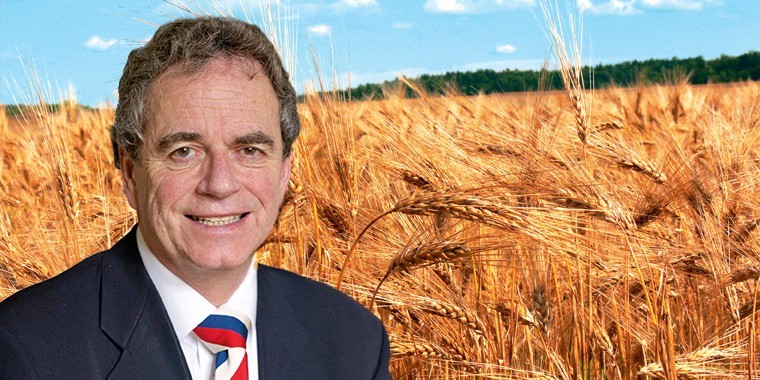Today is 20 March and the official start of spring, the vernal equinox. Unfortunately we still have a covering of snow in the south.
I said last month that almost no spring barley had been planted then and very little has been possible since. Being the eternal optimist by the time you read this I expect you will have got on and planted most of your spring malting barley.
It really is drop your trousers time. By that I mean malting barley growers will tell you that the best way to establish if the ground is warm enough to drill is to drop your trousers and sit down on it. If it’s too cold for your backside, it’s too cold to plant. I wouldn’t try that just now.
It is interesting that a number of my malting barley growers had already told me that the best quality malting they produced in the last two years was planted in the last few days of March and early April. So irrespective of the weather, that’s what they were intending to do anyway. Years ago we used to refer to late drilled spring barley going into April rather disparagingly as cuckoo barley. Modern varieties are far more robust and the type of equipment now available means that farms can be planted in a few days rather than weeks, so late planting may not be such a problem.
France, I am pleased to say, has endured the same weather that we have. But as far as spring barley goes, they are still a big country. They have only planted 30% so also behind the game. Their cut off point is the 10 April: after that most can comfortably switch into maize. None of this has made much difference to the forward harvest 2018 malting market.
End users, maltsters and brewers keep pointing to Denmark where reduced winter wheat plantings means an increased spring malting barley acreage. Plantings in Europe including the UK were meant to be seven to 10% up: we will have to wait and see. We already have a good amount of forward malting barley business on the book at better values than the current forward market so I would be reluctant to sell anymore until those values are achievable again or we have a clear idea of what is actually planted.
In the last issue I mentioned the elephant in the room being the temporarily closed ethanol plant. No sooner had I written that than it announced it was reopening. It’s up and running now and while it’s not in full production yet, it’s forecast to be fully operating from May right through to harvest.
The next bit of good news was that from April, parliament have voted through an increase in the inclusion rate of bio fuels from 4.75% to 7.5% as part of the UK renewable transport fuel obligation. This is a real boost for the UK wheat market. It underpins the ethanol demand in the UK wheat balance sheet for the next few years. At a time, when faced with Brexit uncertainties, we need to maximise home consumption and rely less on exports, as we have this year. It is starting to look as though only a really big harvest would mean the UK having any wheat to export at all from the 2018 harvest.
In the bigger picture, the United States mid west and delta states have just had some much needed rain – but only about one inch. It missed most of the great plains. Argentina also had some. This caused the Chicago wheat market to fall for several days. But US wheat was well over priced and needed the correction. Our futures followed it down but it soon bounced back.
I cannot alter my long held view: I don’t think there can be much old crop wheat anywhere in the UK. So sooner or later even in Kent the price must improve. Feed barley is amazing for on paper there is quite a surplus somewhere. So while they are looking for it, keep selling. By the end of April someone will be telling us they have winter barley out in ear, and it’s only six weeks to harvest.
Oilseed rape remains disappointing. Yes it had its rally to £300 and we sold some. But the European Union are now talking better yields from the 2017 harvest and Argentina have been dumping some cheap bio diesel into Europe. But there is still time for further demand to emerge in the next month. Meantime, carry on cashing in the barley and the wheat: two out of three right isn’t bad.




